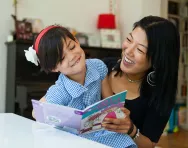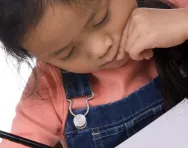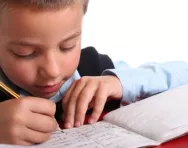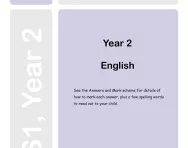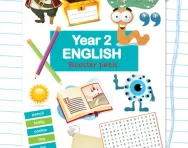TheSchoolRun.com closure date
As we informed you a few months ago, TheSchoolRun has had to make the difficult decision to close due to financial pressures and the company has now ceased trading. We had hoped to keep our content available through a partnership with another educational provider, but this provider has since withdrawn from the agreement.
As a result, we now have to permanently close TheSchoolRun.com. However, to give subscribers time to download any content they’d like to keep, we will keep the website open until 31st July 2025. After this date, the site will be taken down and there will be no further access to any resources. We strongly encourage you to download and save any resources you think you may want to use in the future.
In particular, we suggest downloading:
- Learning packs
- All the worksheets from the 11+ programme, if you are following this with your child
- Complete Learning Journey programmes (the packs below include all 40 worksheets for each programme)
You should already have received 16 primary school eBooks (worth £108.84) to download and keep. If you haven’t received these, please contact us at [email protected] before 31st July 2025, and we will send them to you.
We are very sorry that there is no way to continue offering access to resources and sincerely apologise for the inconvenience caused.
KS1 English SATs: what is tested in the Y2 assessments

The Key Stage 1 SATs cover English and maths and help teachers check and confirm what children have learnt in Y1 and Y2. If you’re worried about your tiny six or seven year old sitting formal examinations, don’t be – your child’s progress is continually assessed throughout the year (that’s how teachers plan lessons and activities) and the Year 2 tests are simply another form of assessment.
To help you understand what your child’s teacher will be looking for we asked KS1 teacher and mum of three Jo Willis to explain what the learning objectives are at the end of Y2 – and to translate them into parent-friendly language!
KS1 SATs reading learning objective
The KS1 SATs reading objective is to read accurately.
Once they’ve learnt to read children need to start reading to learn. By reading different kinds of texts they’ll come into contact with new words, new kinds of sentence construction and new ideas. To read they’ll be using a number of techniques they’ve been taught in Reception and KS1, including:
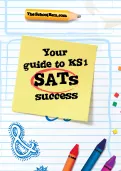
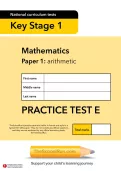
Prepare your child for KS1 SATs today
- Your guide to KS1 SATs
- KS1 SATs revision course
- 10 KS1 SATs practice papers in English & maths
| Blending sounds in words | Children learn the correspondence between each letter, or group of letters (grapheme), and the sound (phoneme) it/they make, and use this knowledge, by blending sounds, to read words. |
| Breaking words into syllables | When looking at longer words, children learn to read each syllable separately before combining them to read the word. Clapping the syllables in words can help children to identify them. |
| Reading common high frequency words without sounding out | Common words or high frequency words are the words that children encounter most often in their reading (for example, 'the', 'because', 'about'). They can’t always be ‘sounded out’ and are usually learnt by rote. |
| Reading unfamiliar words | Even confident readers (and adults!) need to read words they don’t know, so encourage your child to sound them out and work out their meaning (or ask for an explanation). To become independent readers children need to tackle new vocabulary with confidence. |
KS1 SATs reading comprehension learning objective:
The KS1 SATs reading comprehension objective is to demonstrate a clear understanding of the text.
Once they’ve mastered phonics children can sound out, blend and read even complicated words with ease – but do they understand what they’ve read? To check their reading comprehension your child’s teacher will expect your child to:
| Notice when their reading does not make sense and self correct | For example, 'He was not very happy though he did not show it' might mistakenly be read as 'He was not very happy through he did not show it' but a child who can self correct would notice their mistake because 'through' would not make sense in the context. |
| Respond to and ask questions about the text | Bedtime stories come into their own here! Reading to your child, even after they’ve learnt to read themselves, offers a great opportunity to discuss their favourite words and phrases and enjoy the effects the text creates together. |
| Understand what characters might be like and predict what they might do next, basing their ideas on what they’ve read | When inferring children learn to 'read between the lines' and gain meaning from what the author is implying, rather than from actual statements. (There’s a great example of this in The Gruffalo’s Child by Julia Donaldson – when the Gruffalo’s child says "I'm not scared!", is that what she really means? What do her words tell us about her character? Ask your child what they think!) |
| Give a personal response to the text, discussing their understanding and commenting on how the text makes them think or feel | This aspect of reading is what actually makes us become life-long readers and lovers of books. Encourage you child to talk about their reading (remembering it is ok not to like a book!). Begin simply, with open-ended questions (Which character did you most relate to? How did the poem make you feel? What did you find out? Did the story end the way you expected it to?), encourage your child to refer back to the text to explain their thinking and remember that often there is no right or wrong response. |
KS1 SATs writing composition learning objective
The KS1 SATs writing composition objective is to write for different audiences and purposes.
As children’s reading improves, so does their writing – what they read helps them increase their vocabulary and grammatical knowledge, but also to understand how different texts are structured. To help them write confidently in KS1, children are taught to:
| Plan their ideas before writing | Spider diagrams or mind maps are effective ways for children to plan their writing. These prompts help children to include all their ideas and to structure their thoughts before writing. |
| Make simple additions and revisions to improve their writing | This is a skill that young children often find quite hard. To help your child try encouraging them to use a coloured pencil to underline any areas where their writing might be improved (for example swapping a word for a more interesting one, adding time connectives like ‘then’ or ‘after’ to improve the flow of their sentences or noticing where a noun phrase could be extended, transforming ‘the dog’ into ‘the small, spotty dog’). |
| Proofread their writing to check it makes sense and to check for errors in spelling, grammar and punctuation | Using the same strategy as above, encourage your child to 'correct' their own writing using a coloured pencil. |
KS1 SATs grammar learning objective
The KS1 SATs grammar objective is to use punctuation, verb tenses and coordinated phrases correctly. Children will be given a separate test in spelling, punctuation and grammar.
By the end of KS1 children will be looking at the key features of different types of sentences and are expected to write accurately and correctly. Your child’s teacher will be looking for:
| Correct use of punctuation, including full stops, capital letters, exclamation marks, question marks, commas for lists and apostrophes for the contracted forms of words | |
| The use of expanded noun phrases to describe and specify | An expanded noun phrase adds detail in a way that means a phrase behaves like a noun. This can sometimes be just a few adjectives ('the big yellow bird'), but usually we would use it to refer to a phrase which expands the noun with a more interesting phrase (for example, 'the big yellow bird which my daughter saw this morning'). |
| The use of coordinated words or phrases, linked by conjunctions (also known as connectives) | Find out more about connectives in our guide for parents. |
| An understanding of the present and the past tense (and the fact that they need to be used consistently) and the continuous form of verbs in the present and past tense to mark actions in progress (I am eating / I was eating) | Verb tenses tell us when an action took place(in the past, the present or the future). Our guide for parents explains more about how verb tenses are taught in primary school. |
KS1 SATs spelling learning objective
The KS1 SATs spelling objective is for basic spelling to be accurate.
By Y2 most children will be used to learning spellings, preparing for small spelling tests and trying out the Look, Cover, Write and Check method. When assessing their work, the teacher will be looking for:
- Phonetically plausible attempts to spell unfamiliar words – in other words, by hearing the sounds in words and knowing the letters that represents them, most children will try to spell a word.
- Spelling common high frequency words correctly. Sometimes known as ‘tricky words’, high frequency word spellings need to be learnt by heart.
- Correct spelling of words with contracted forms (I’m for I am; mustn’t for must not, etc) and suffixes (play becomes playing, for example).
- The ability to distinguish between homophones, words which sound the same but are spelled differently (one / won; two / too / to, for example).
KS1 SATs handwriting learning objective
The KS1 SATs handwriting objective is legible writing.
Although neatness is important in handwriting, remember that being legible is the key focus and over time children will develop their own handwriting style.
By the end of Y2 children will be forming lower case letters correctly, using some of the diagonal and horizontal strokes needed to join letters, writing capital letters of the correct size and relationship to lower case letters and spacing their words correctly.
For more information about KS1 SATs writing assessments read our guide for parents.
Y2 maths SATs explained
The learning objectives for KS1 maths SATs are explained in our Y2 numeracy outline; we also answer general parents' questions about SATs in Y2, with links to further guidance. You can also read a detailed guide to what is taught in Y1 English and Y2 English in our parents' guide.
KS1 SATs past papers and practice and revision materials
If you want to look at SATs past papers from previous years, KS1 SATs past papers from 2016 to last year are available to download for free from TheSchoolRun.
TheSchoolRun also offers subscriber-only KS1 SATs 'mock' papers, written by teachers to offer extra practice for the Y2 assessments.
Our KS1 SATs Learning Journey offers 48 worksheets and activities to help your child revise all the Y2 objectives for English and maths the fun way.
